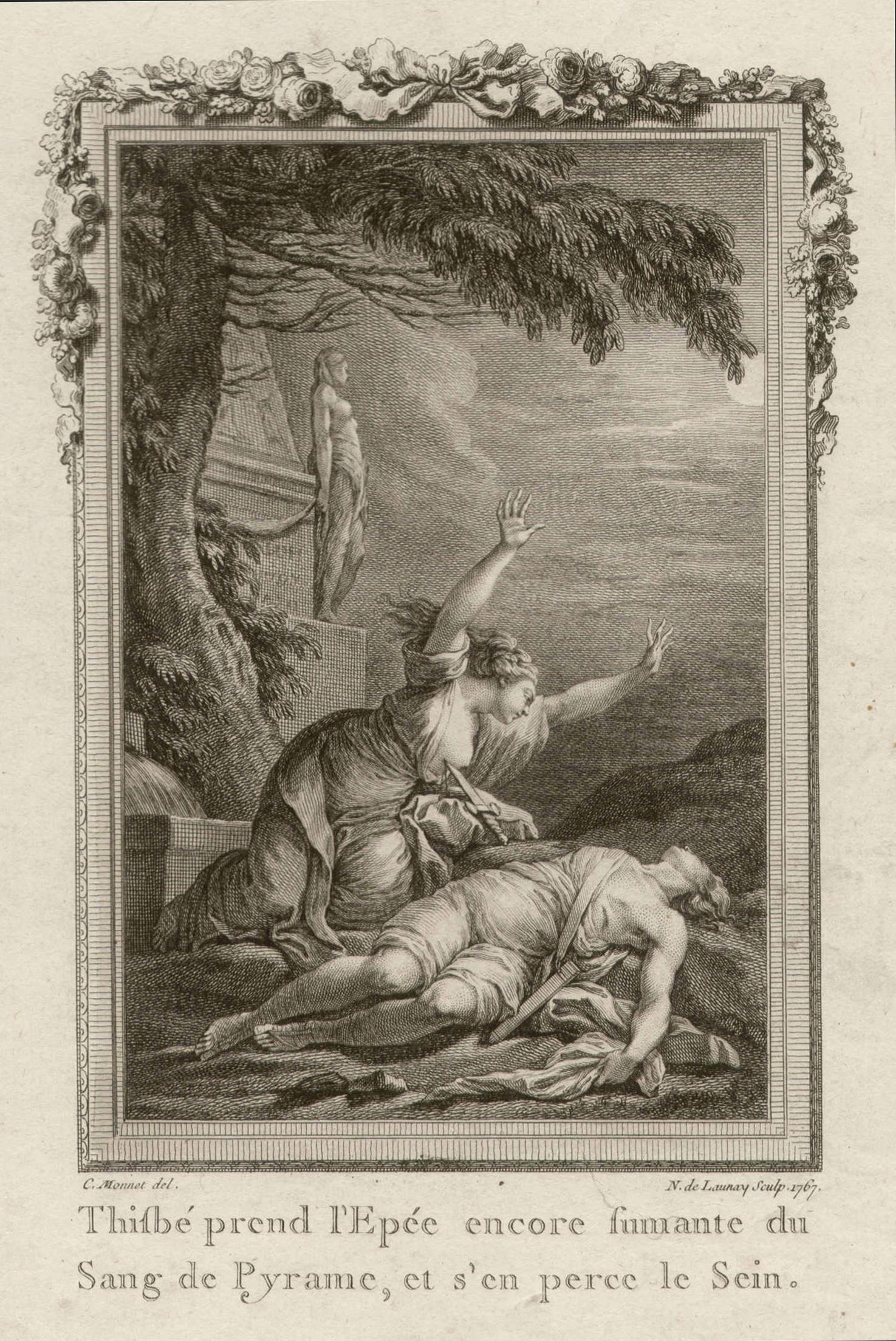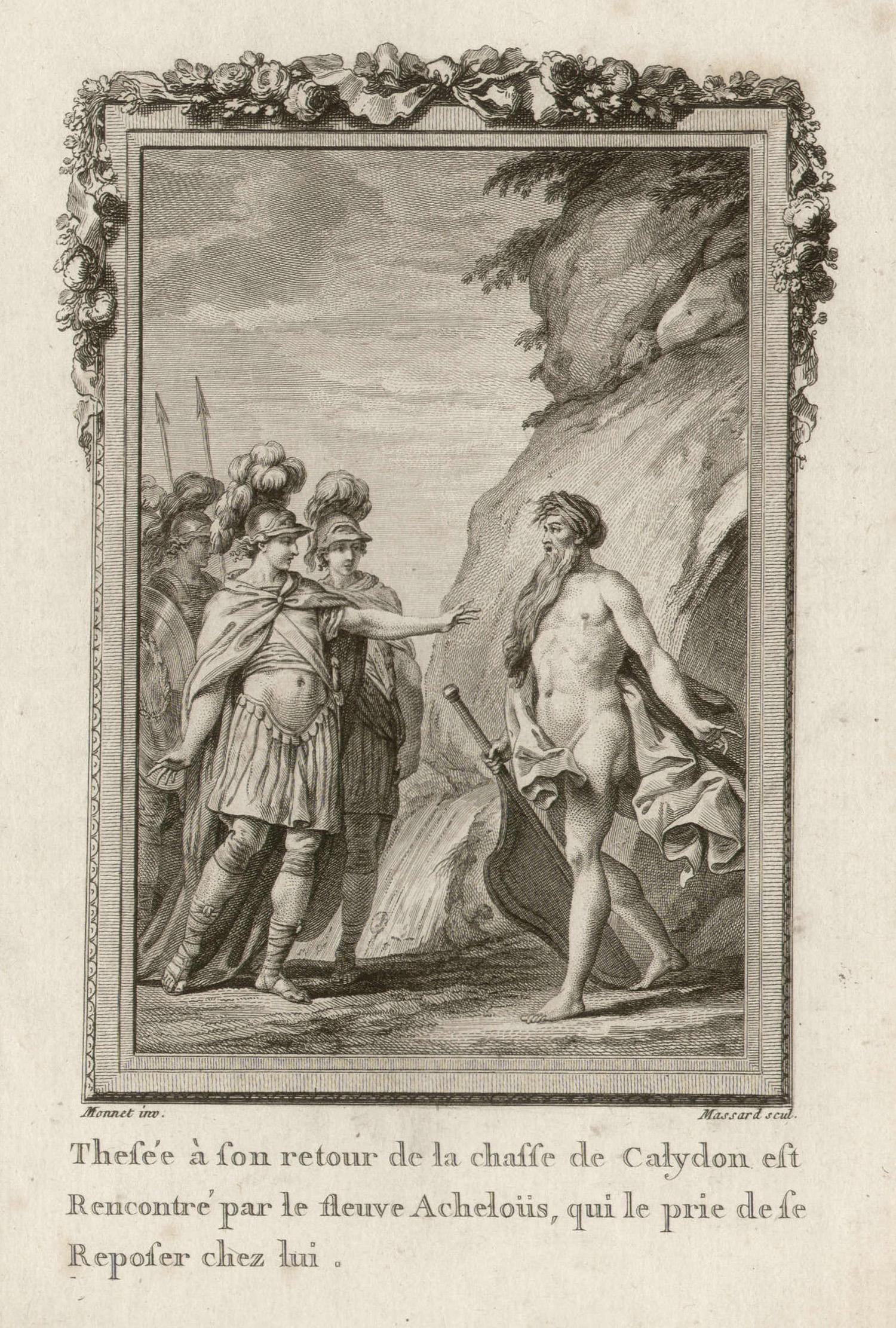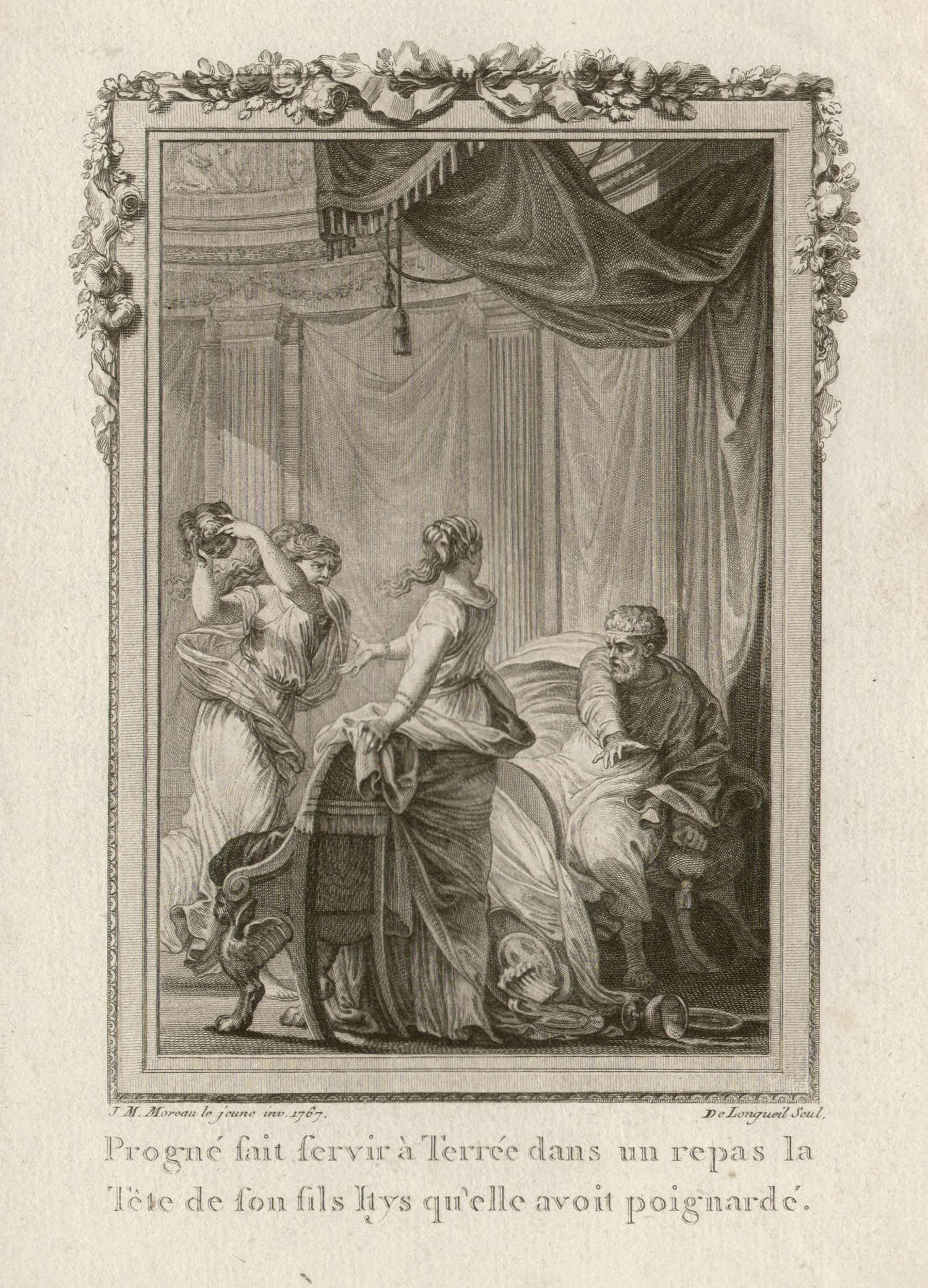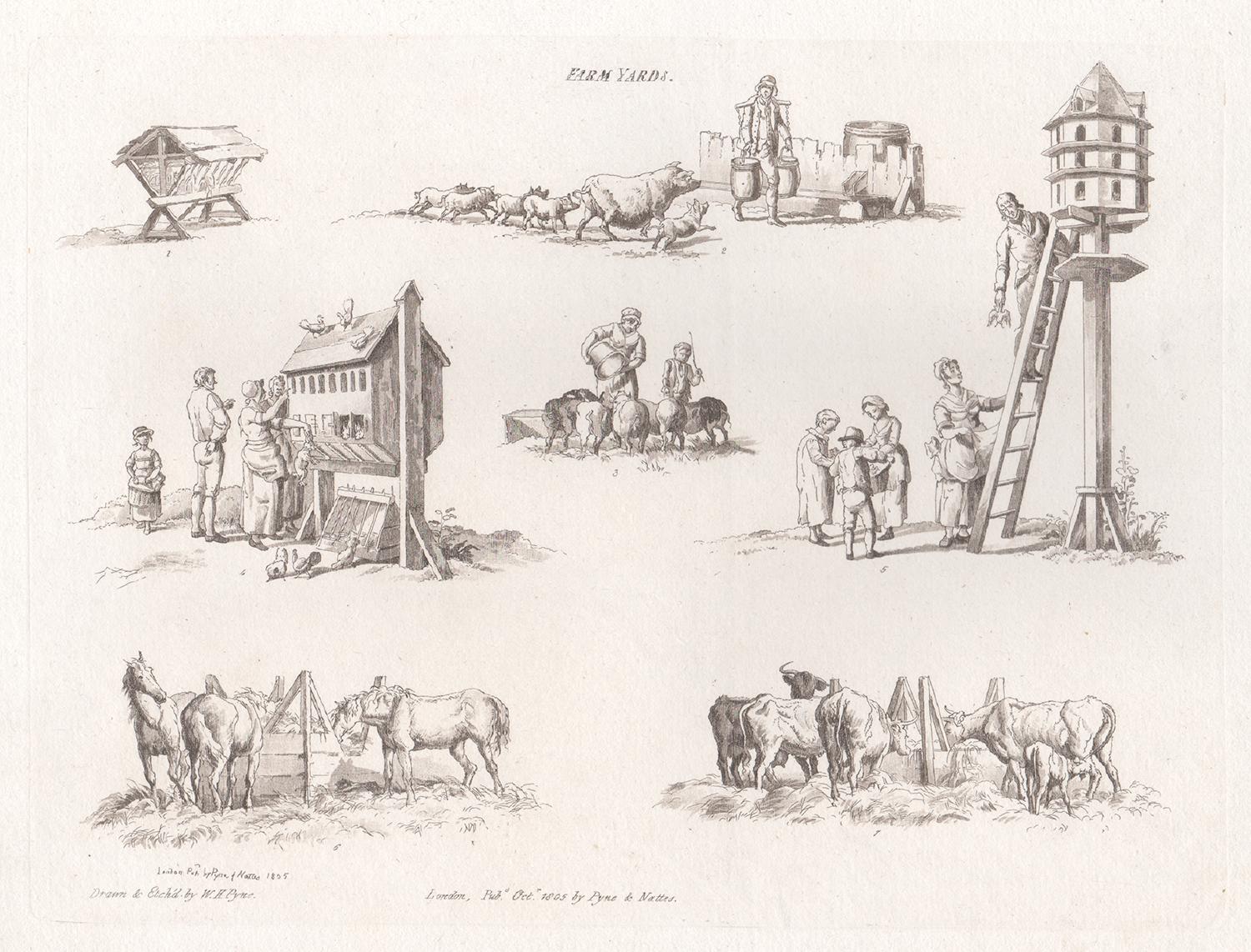Items Similar to Agenor and Cadmus, Ovid's Metamorphoses, French Classical engraving, 1768
Want more images or videos?
Request additional images or videos from the seller
1 of 2
Binet after Charles Monnet (1732-1808)Agenor and Cadmus, Ovid's Metamorphoses, French Classical engraving, 17681768
1768
About the Item
Copper-line engraving by Binet after Charles Monnet (1732-1808).
Agenor tells Cadmus to go and look for his sister Europae.
From 'Les Metamorphoses d'Ovide', published in Paris in 1768.
Ink stamp on reverse reads 'Manufre de M.ge le Duc D'angouleme a Paris'. Porcelain interest.
220mm by 145mm (sheet)
- Creator:
- Creation Year:1768
- Dimensions:Height: 8.67 in (22 cm)Width: 5.71 in (14.5 cm)
- Medium:
- Movement & Style:
- Period:
- Condition:Ink stamp on reverse reads 'Manufre de M.ge le Duc D'angouleme a Paris'.
- Gallery Location:Melbourne, AU
- Reference Number:1stDibs: LU124426431502
About the Seller
5.0
Platinum Seller
These expertly vetted sellers are 1stDibs' most experienced sellers and are rated highest by our customers.
Established in 2005
1stDibs seller since 2019
443 sales on 1stDibs
Typical response time: 1 hour
- ShippingRetrieving quote...Ships From: Melbourne, Australia
- Return PolicyA return for this item may be initiated within 14 days of delivery.
More From This SellerView All
- Golf Match on Blackheath, antique sport wood-engraving, 1870Located in Melbourne, VictoriaWood-engraving. 1870. From the Illustrated London News of 26 March 1870 (text on the reverse). 275mm by 400mm (sheet)Category
Late 19th Century Naturalistic Figurative Prints
MaterialsEngraving
- Thisbe and Pyramus, Ovid's Metamorphoses, French Classical Myth engraving, 1768Located in Melbourne, VictoriaCopper-line engraving by Nicolas de Launay after Charles Monnet (1732-1808). Thisbe, finding the dead body of Pyramus, throws herself on a sword. Fro...Category
Mid-18th Century Naturalistic Figurative Prints
MaterialsEngraving
- Theseus and Achelous, Ovid's Metamorphoses, French Classical engraving, 1768Located in Melbourne, VictoriaCopper-line engraving by Massard after Charles Monnet (1732-1808). Theseus returns from the Calydonian hunt and is met by the river god Achelous. From...Category
Mid-18th Century Naturalistic Figurative Prints
MaterialsEngraving
- Procne and Tereus, Ovid's Metamorphoses, French Classical engraving, 1768By Binet after Charles Monnet (1732-1808)Located in Melbourne, VictoriaCopper-line engraving by De Longueil after JM Moreau the Younger. Depiction of Philomela and Procne showing the severed head of Itys to his father Tereus. From 'Les Metamorphoses d...Category
Mid-18th Century Naturalistic Figurative Prints
MaterialsEngraving
- Hunting, early 19th century sepia soft ground etching, 1805By William Henry PyneLocated in Melbourne, Victoria'Hunting Pl II' Etching from William Henry Pyne's (1769-1843) series 'Microcosm: or, a picturesque delineation of the arts, agriculture, manufactur...Category
Early 19th Century Naturalistic Figurative Prints
MaterialsEngraving, Etching
- Farm Yards, early 19th century sepia soft ground etching, 1805By William Henry PyneLocated in Melbourne, Victoria'Farm Yards' Etching from William Henry Pyne's (1769-1843) series 'Microcosm: or, a picturesque delineation of the arts, agriculture, manufacturers...Category
Early 19th Century Naturalistic Figurative Prints
MaterialsEngraving, Etching
You May Also Like
- 18th-century celestial - Hydra Crater Corvus Sextans VirgoLocated in London, GB18th-century celestial FLAMSTEED, John. Hydra Crater Corvus Sextans Virgo London, C. Nourse, 1753. A fine star chart from the Atlas Coelestis, the largest and most accurate star a...Category
1750s Naturalistic Figurative Prints
MaterialsWatercolor, Engraving
- Fresh Gathered Peas: An 18th C. Engraving From the Series 'The Cries of London'By Francis WheatleyLocated in Alamo, CAThis is a beautifully framed engraving, printed in colors with additional hand coloring, from the famous "Cries of London" series, depicting the lives and professions of the common p...Category
Late 18th Century Naturalistic Figurative Prints
MaterialsEngraving
- Iris PratensisBy Pierre-Joseph RedoutéLocated in London, GBREDOUTÉ, Pierre-Joseph. Iris Pratensis Paris, Chez L’Auteur, 1802-16 The highest peak of Redoute's artistic and botanical achievement... Among the most important monuments of bo...Category
19th Century Naturalistic Figurative Prints
MaterialsHandmade Paper, Engraving
- Flowering Cactus: Redoute Hand-colored Engraving "Cactus Opuntia Polyanthos"By Pierre-Joseph RedoutéLocated in Alamo, CAThis hand colored stipple engraving entitled "Cactus Opuntia Polyanthos, Cierge Raquette Multiflore" by Pierre-Joseph Redouté, Plate 59 from his illustrated publication 'Plantarum Historia Succulentarum ou Histoire des Plantes Grasses', published in Paris in 1799. Redoute was a pioneer of the stipple engraving technique, which he used to create this image. It involves utilizing a series of small dots worked into a copper plate rather than the more common lines. These dots can be made smaller or thicker depending on the degree of opacity the artist intends for various areas of the print. When inked and applied to paper, this allows for a greater portion of the paper to be seen, which accentuates the appearance of luminosity of the subject the artist is creating. Different color inks are used in the printing process, a time consuming technique known as "a la poupee". The engraving is then finished with watercolor to further enhance the beauty and realism of the print subject. This engraving of a flowering cactus is presented in a double mat; white outer mat and heather green inner mat.The mat measures 20" x 16" and the sheet measures 19.5" x 13.38". There are wide margins with a few short tears and chips along the the right and upper edges, which are all covered by the mat. There are small spots predominantly in the margins, but a few are present in the image area, but the print is otherwise in very good condition. There is another Redoute flowering cactus listed on 1stdibs, LU117326854582. The pair would make an attractive display grouping. Pierre-Joseph Redouté (1759-1840), was a painter and botanist originally from Belgium, who pursued his extremely successful artistic career in France. He is well known for his watercolor paintings of roses, lilies and other flowers and their subsequent folio-sized, color stipple engravings. Some believe him to be the greatest botanical illustrator of all time. Redouté was a favorite of the French royal court at the time and of the post French...Category
Late 18th Century Naturalistic Still-life Prints
MaterialsEngraving
- "New Mackrel": An Engraving From the 18th Century Series 'The Cries of London'By Francis WheatleyLocated in Alamo, CAThis is a beautifully framed engraving, printed in colors with additional hand coloring, from the famous "Cries of London" series, depicting the lives and professions of the common p...Category
Late 18th Century Naturalistic Figurative Prints
MaterialsEngraving
- Redoute Hand-colored Engraving of Cactus Flowers "Cactus Peruvianus Cierge"By Pierre-Joseph RedoutéLocated in Alamo, CAThis framed hand-colored stipple engraving entitled "Cactus Peruvianus Cierge du Pérou" by Pierre-Joseph Redouté, Plate 58 from his illustrated publication 'Plantarum Historia Succulentarum ou Histoire des Plantes Grasses', published in Paris in 1799. It depicts a branching limb of a cactus with a beautiful flower. There is a separate detail of the anatomy of a seed with early growth. Redoute was a pioneer of the stipple engraving technique, which he used to create this image. It involves utilizing a series of small dots worked into a copper plate rather than the more common lines. These dots can be made smaller or thicker depending on the degree of opacity the artist intends for various areas of the print. When inked and applied to paper, this allows for a greater portion of the paper to be seen, which accentuates the appearance of luminosity of the subject the artist is creating. Different color inks are used in the printing process, a time consuming technique known as "a la poupee". The engraving is then finished with watercolor to further enhance the beauty and realism of the print subject. This engraving of a flowering cactus is presented in silver-colored ribbed wood frame and a double mat; cream-colored outer mat and heather green inner mat. The frame measures 21.25" high by 17.25" wide by 1.13" deep. The sheet measures 19.88" high by 14" wide. There are wide margins with a few short tears and chips along the the left, right and upper edges, which are all covered by the mat. There are small spots predominantly in the margins, with a few present in the image area. The print is otherwise in very good condition. There is another Redoute flowering cactus listed on 1stdibs, LU117326853392, which is framed and matted identically to this one. The pair would make an attractive display grouping. Pierre-Joseph Redouté (1759-1840), was a painter and botanist originally from Belgium, who pursued his extremely successful artistic career in France. He is well known for his watercolor paintings of roses, lilies and other flowers and their subsequent folio-sized, color stipple engravings. Some believe him to be the greatest botanical illustrator of all time. Redouté was a favorite of the French royal court at the time and of the post French...Category
Late 18th Century Naturalistic Still-life Prints
MaterialsEngraving
Recently Viewed
View AllMore Ways To Browse
French Classical Figurative
Mid Century French Engravings
Duc Duc
Ovid Metamorphoses
Antique Ge
Charles Monnet
Wine Press
Vintage American Shield
French 19th Century Architectural Drawings
Love Over Rules
Picasso Bird Paintings
Rain Dance
Rain Dancer
Vintage Star Wars Sign
Contemporary Nude Reclining
Les Muses Vintage
M Jacques
Rose Ballet





